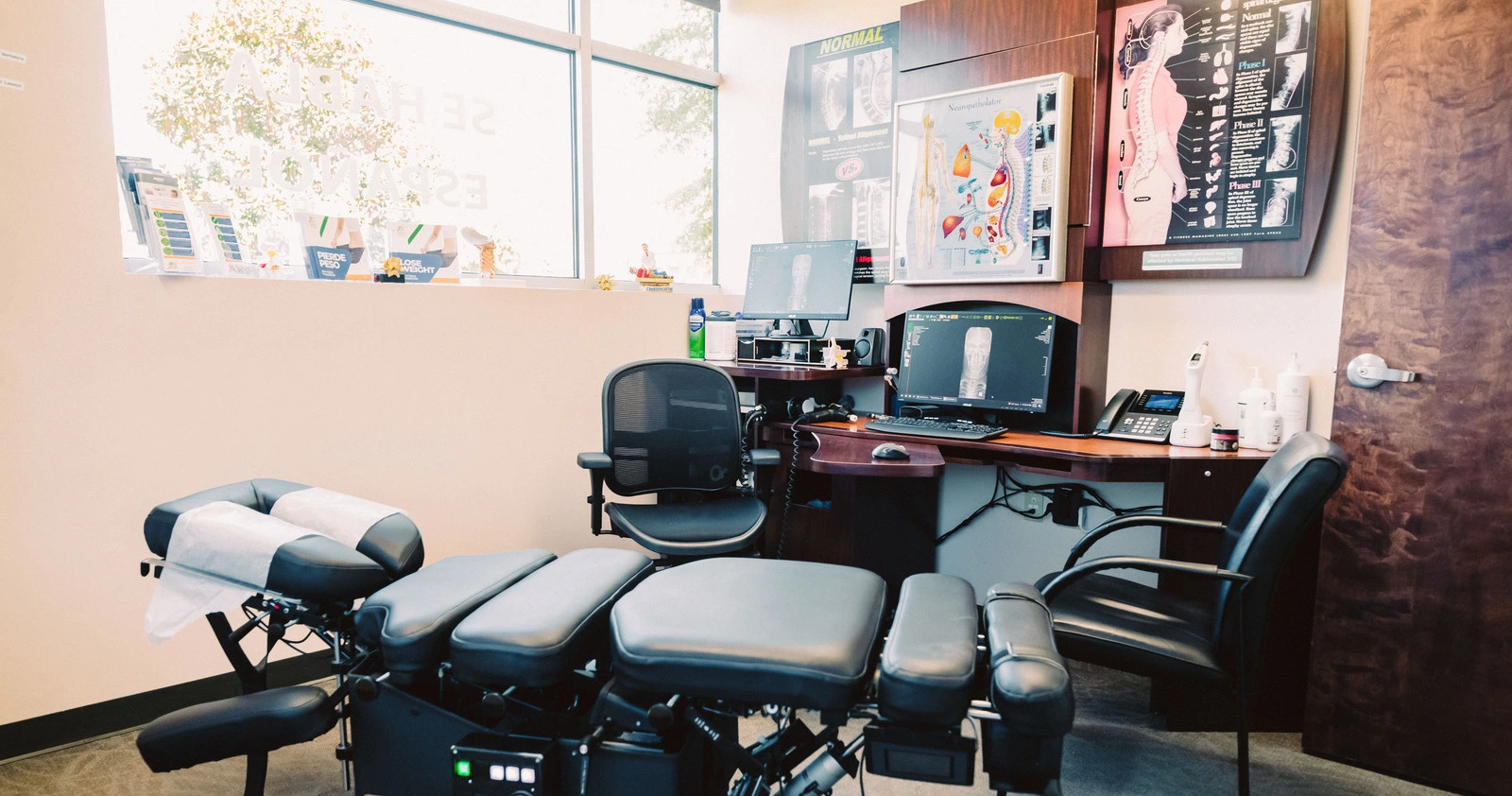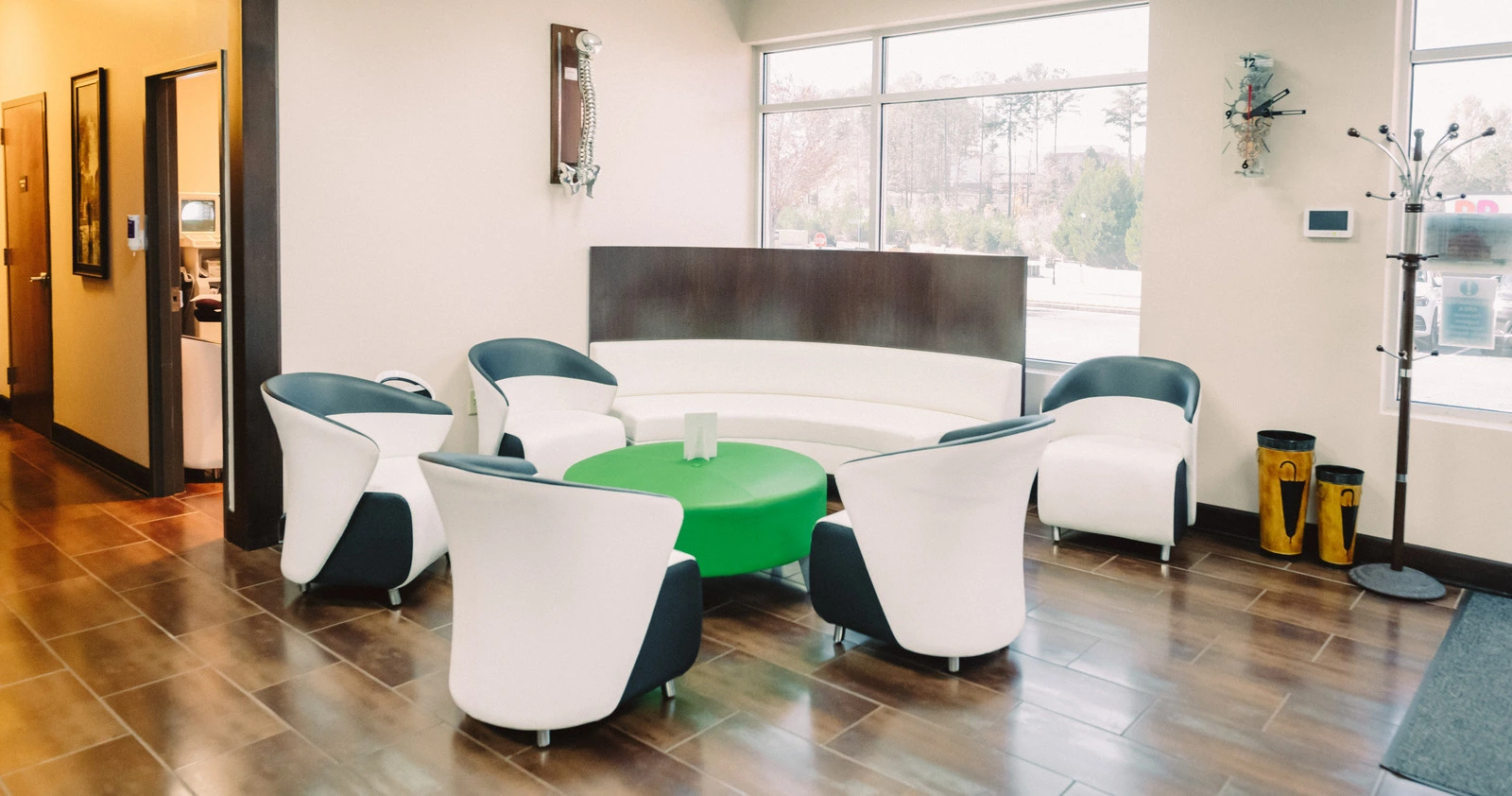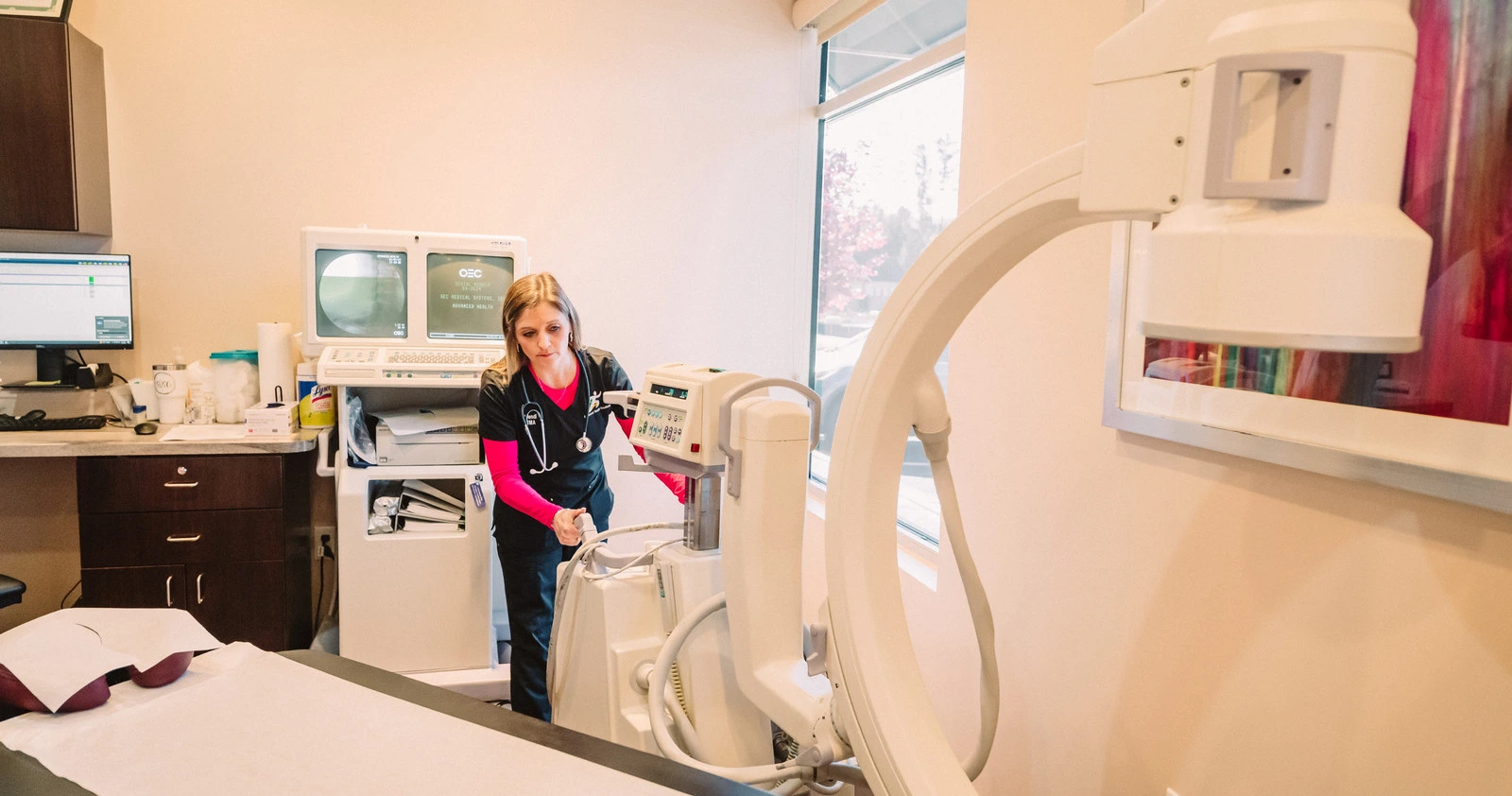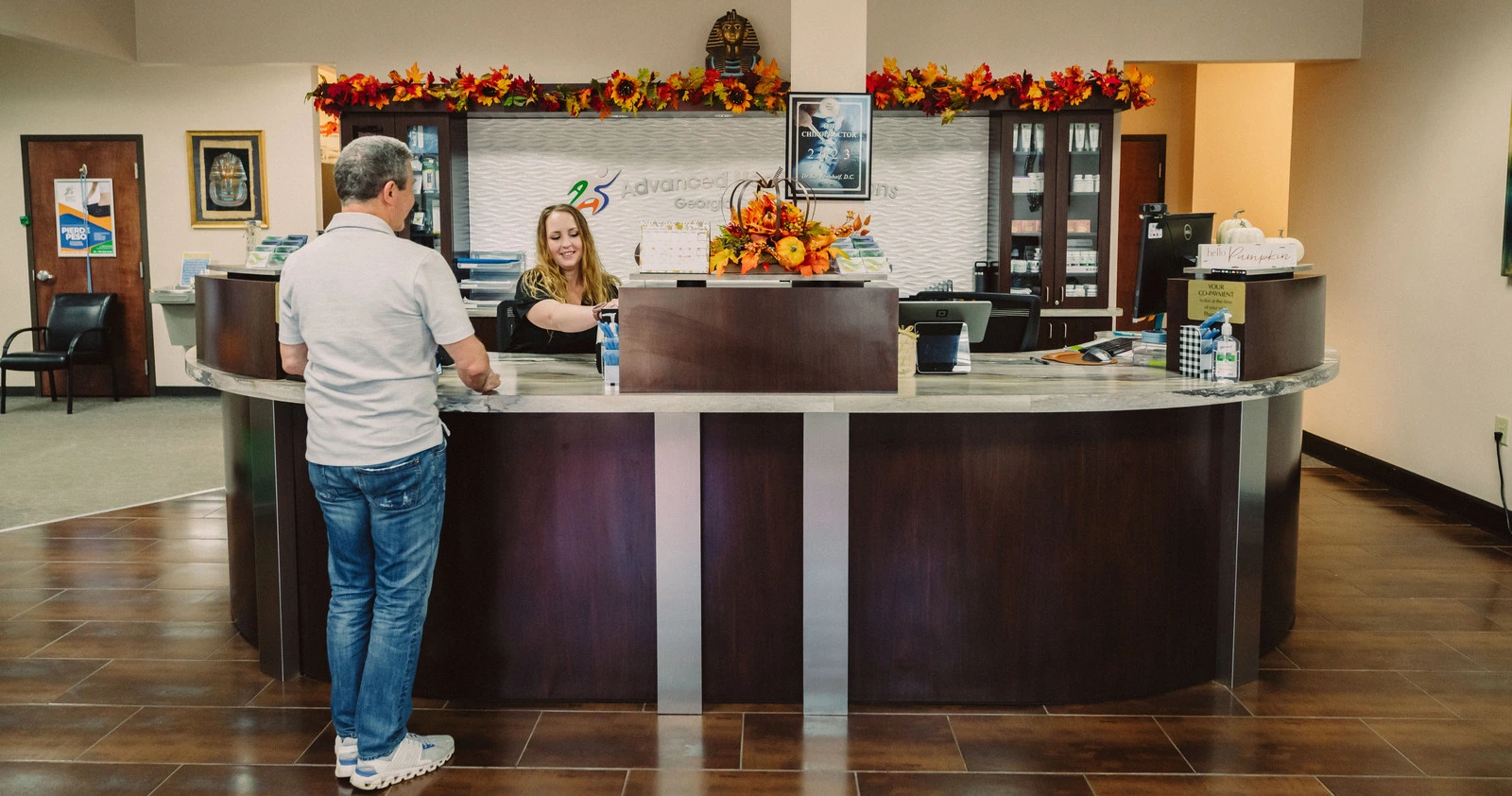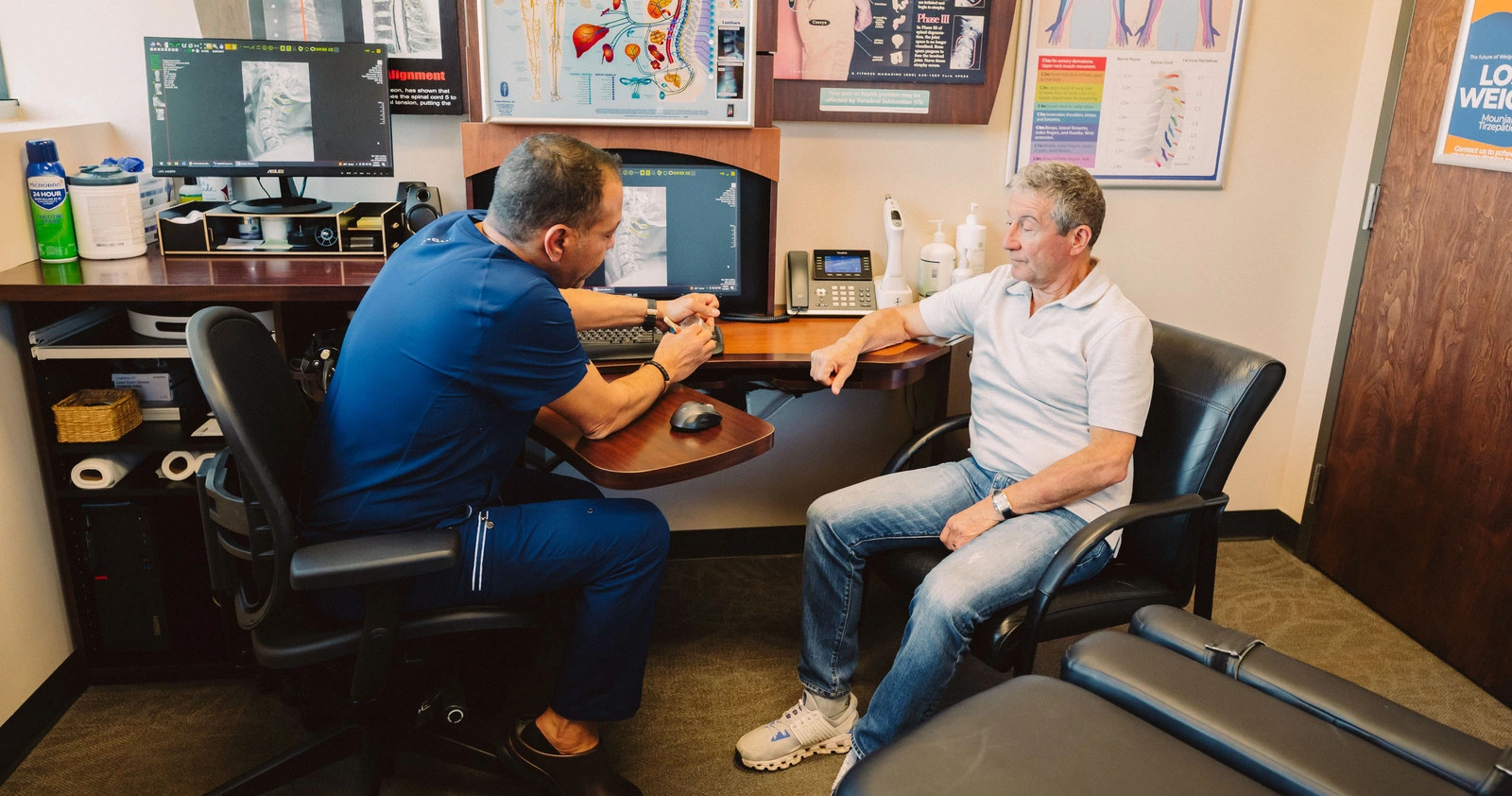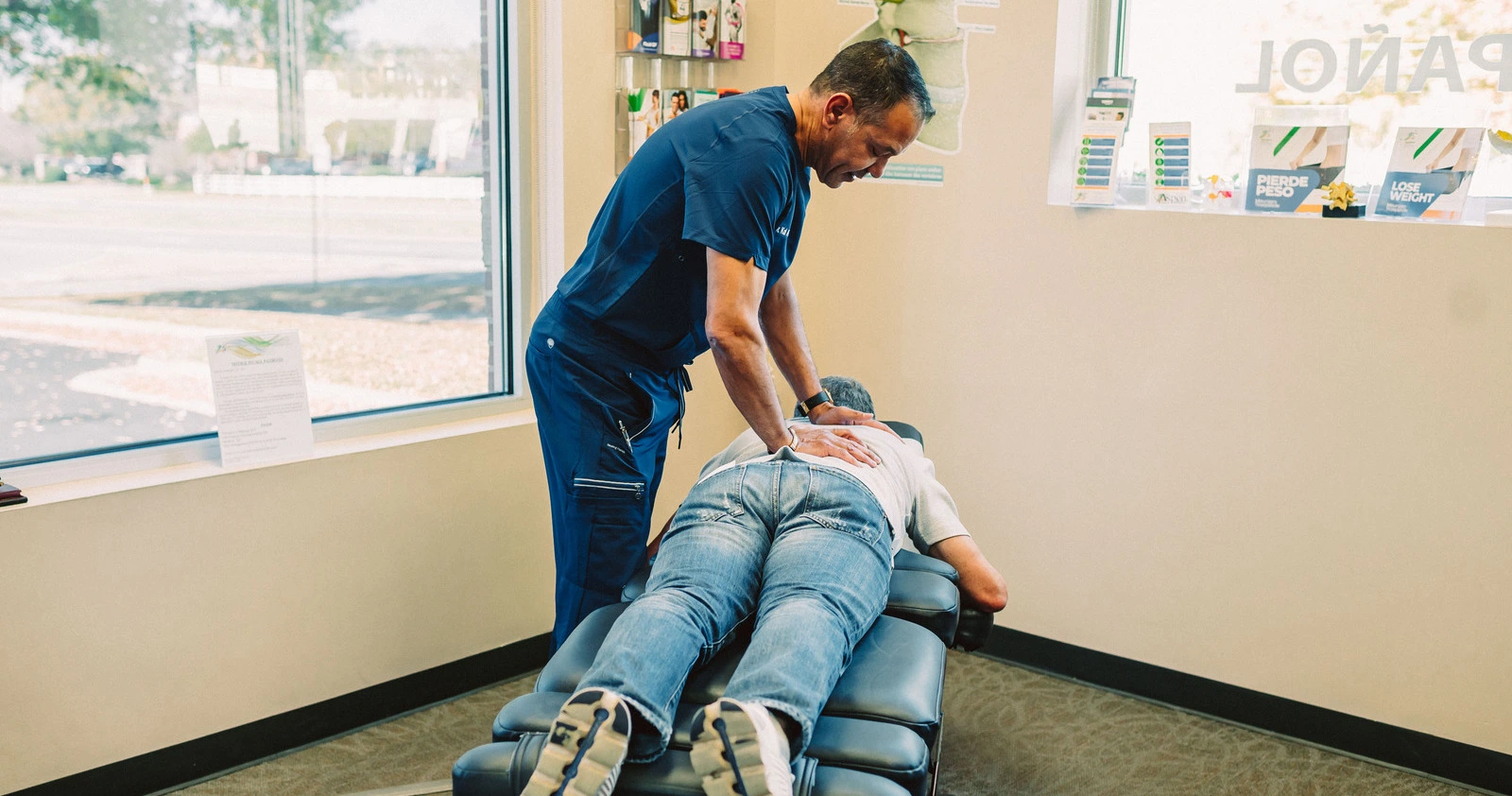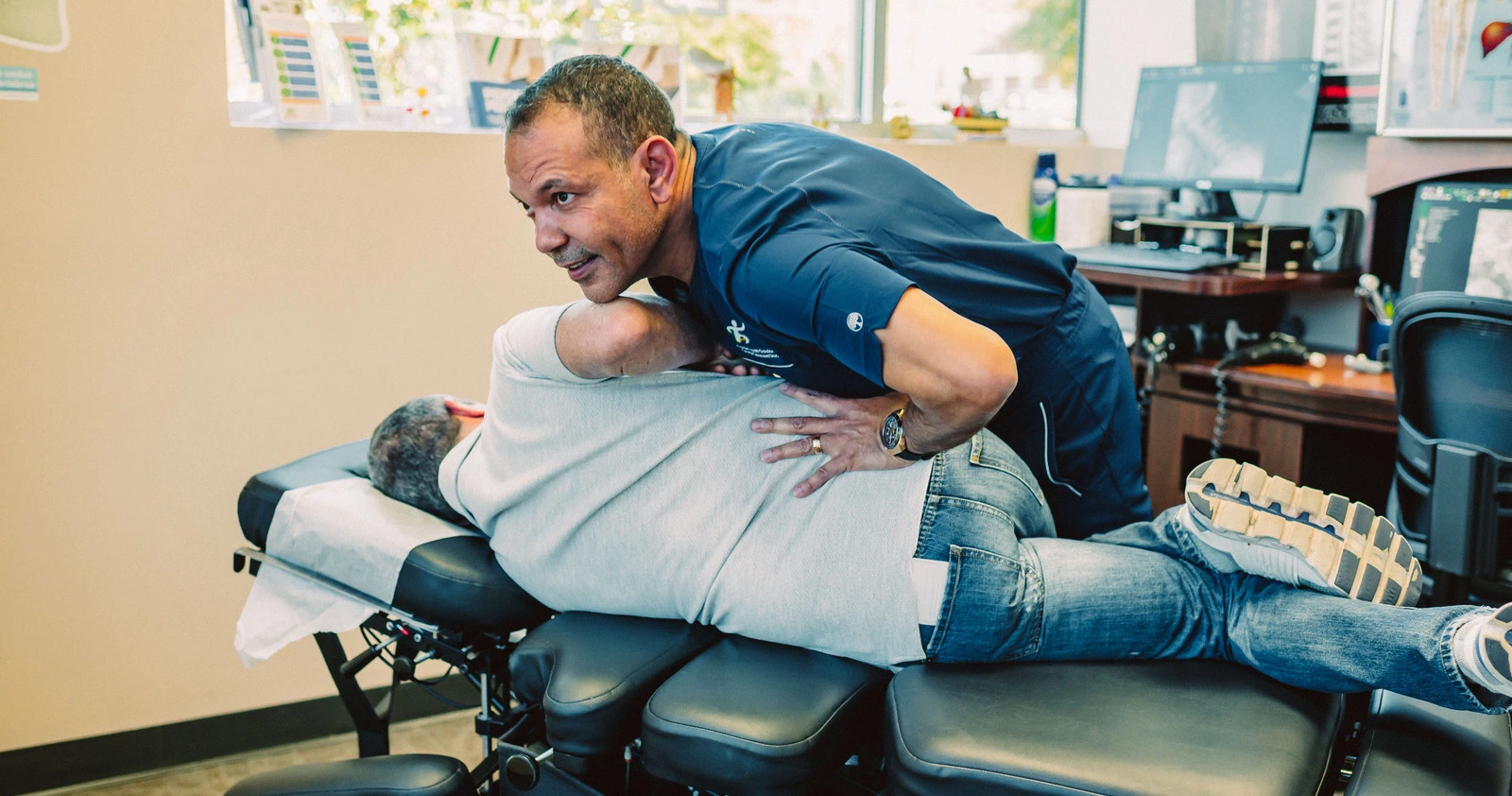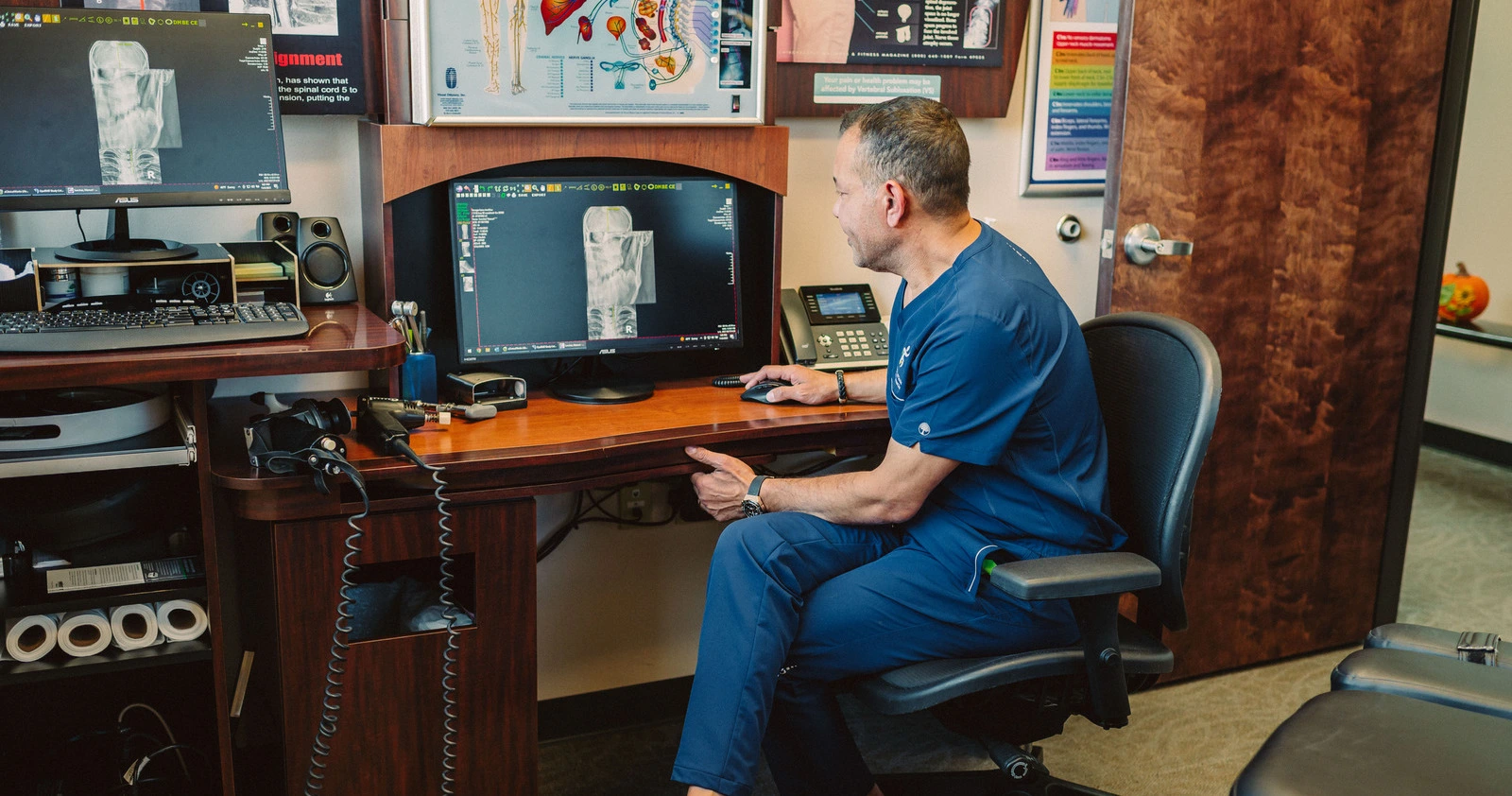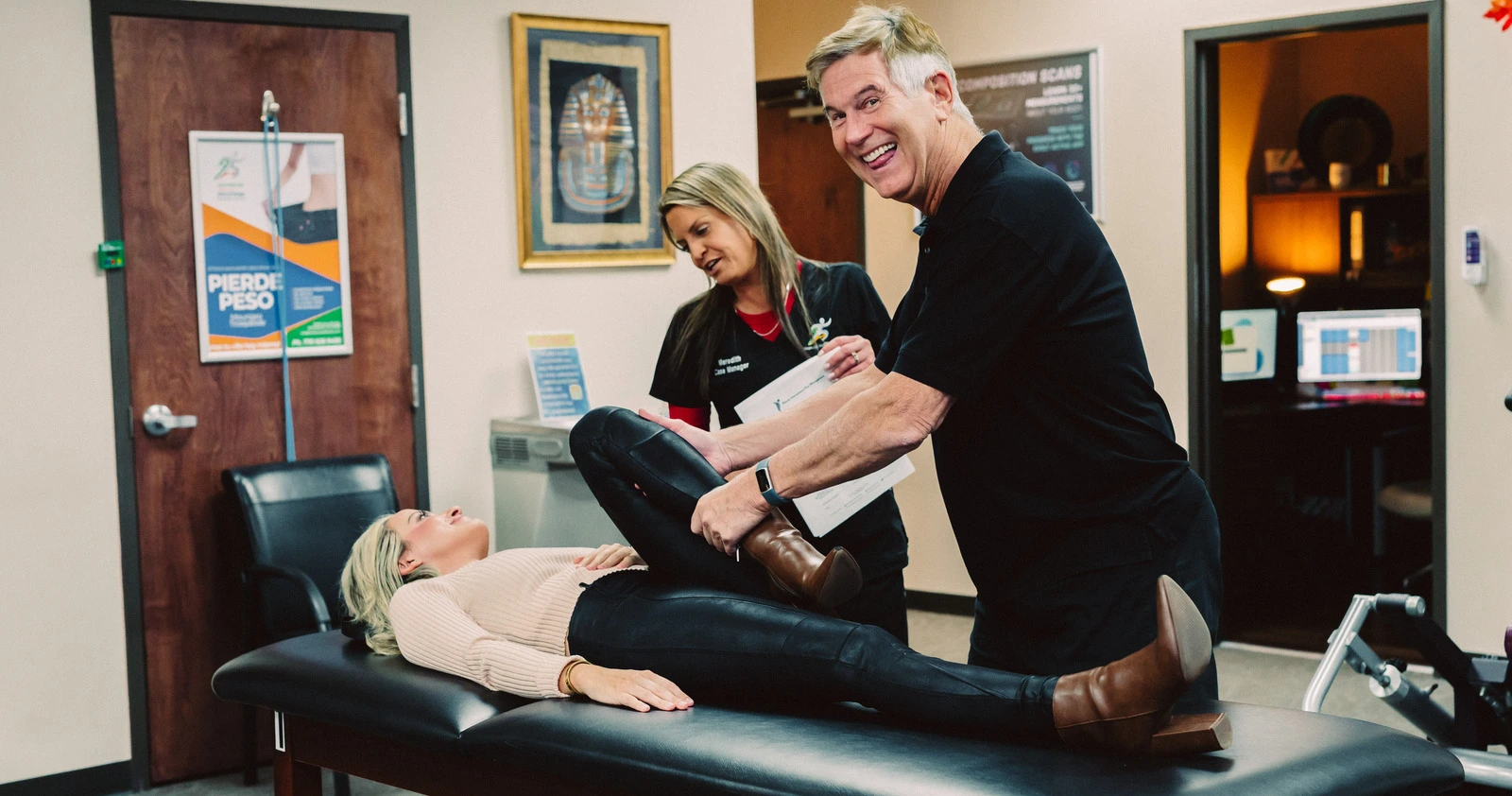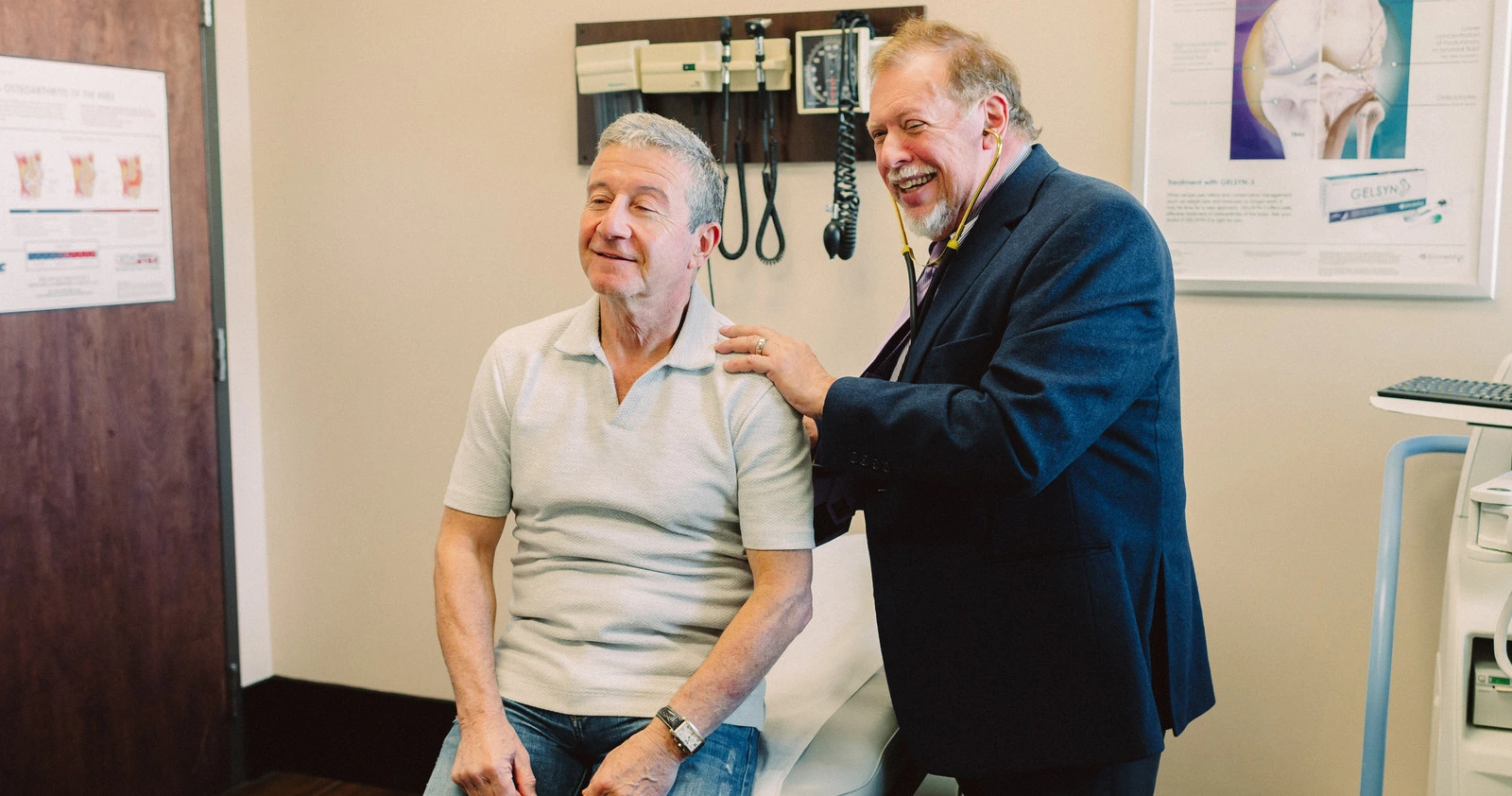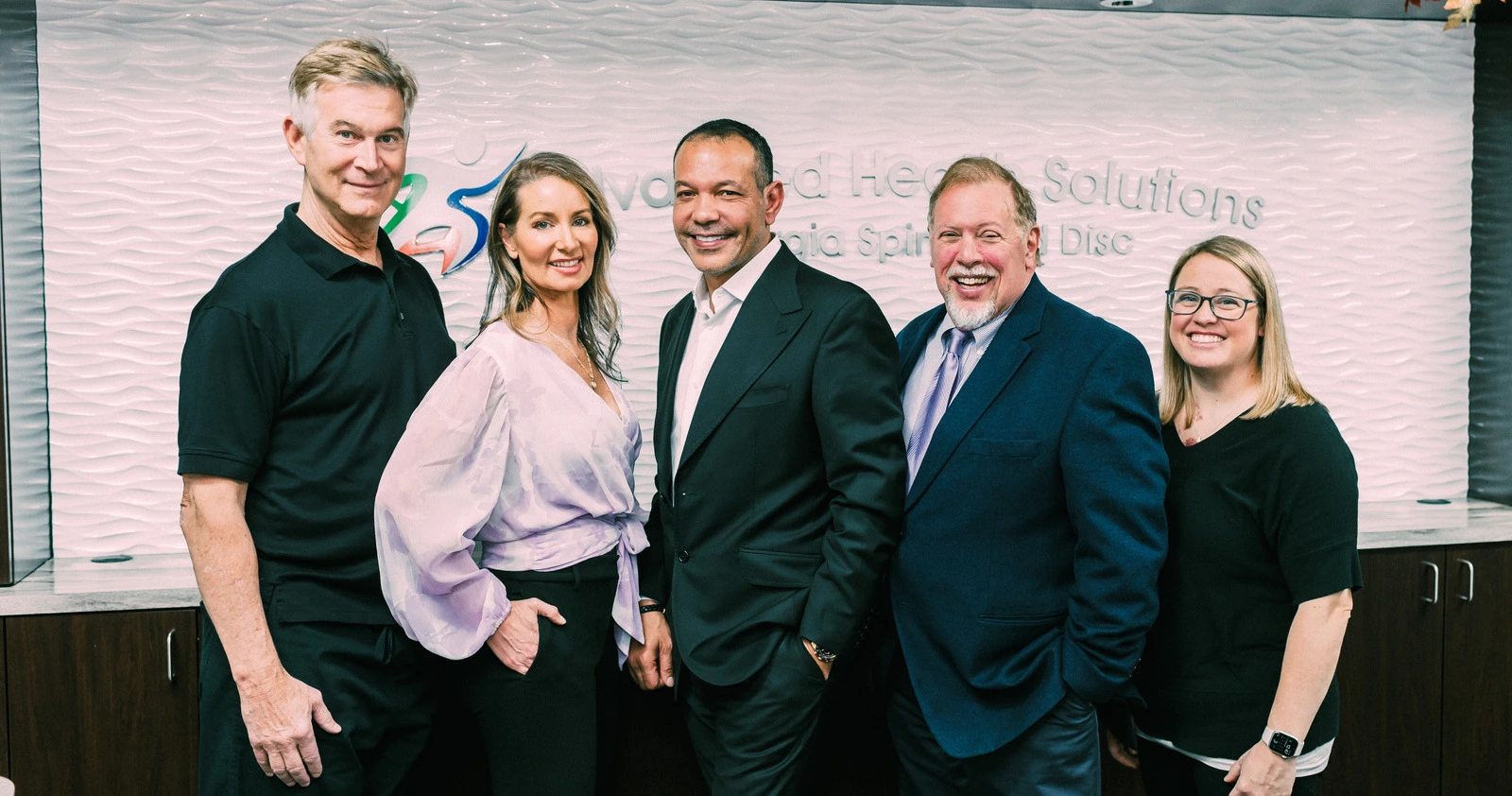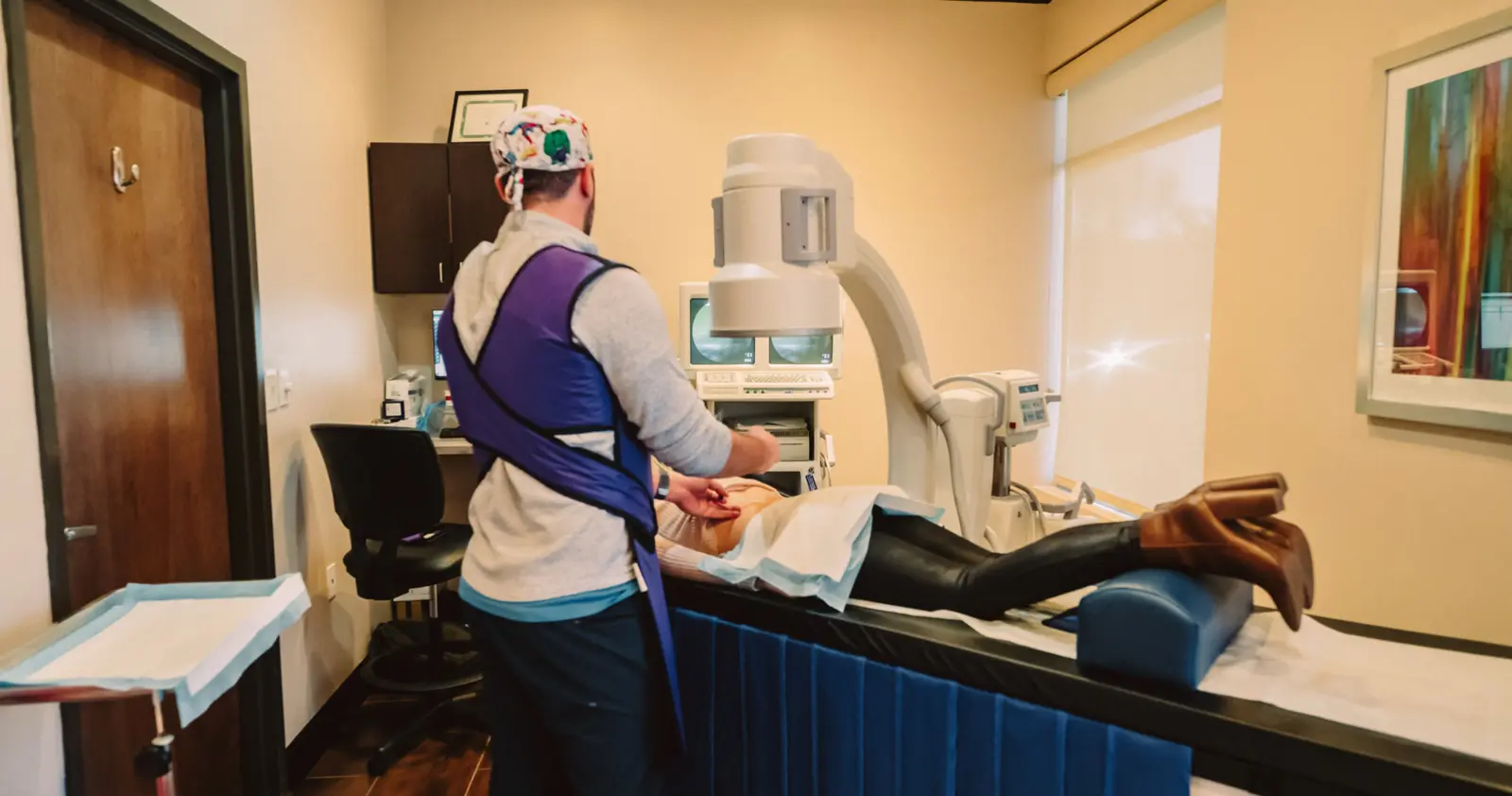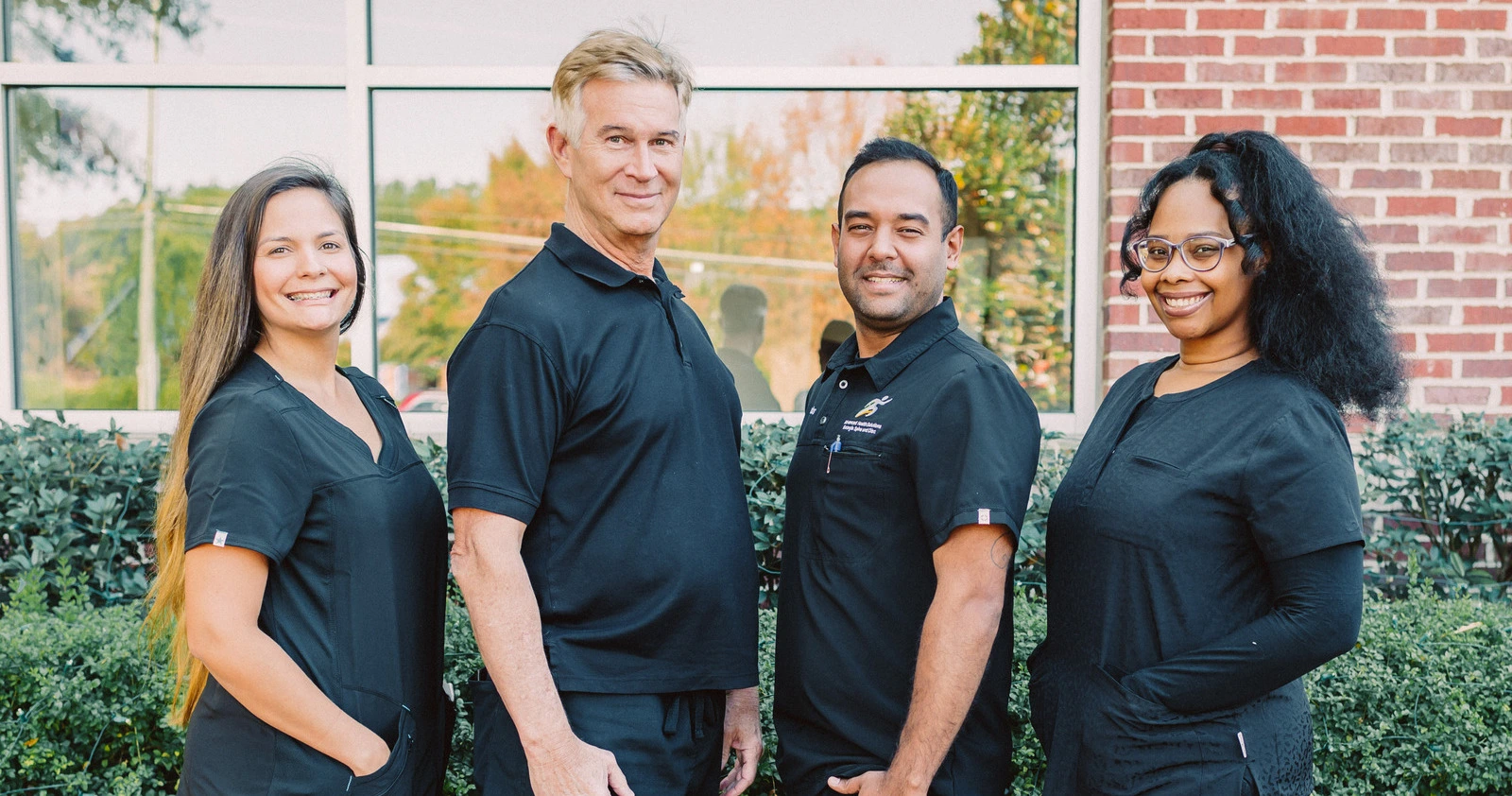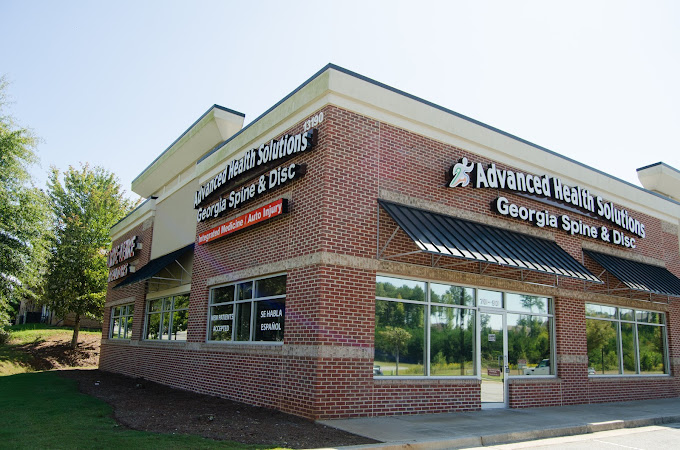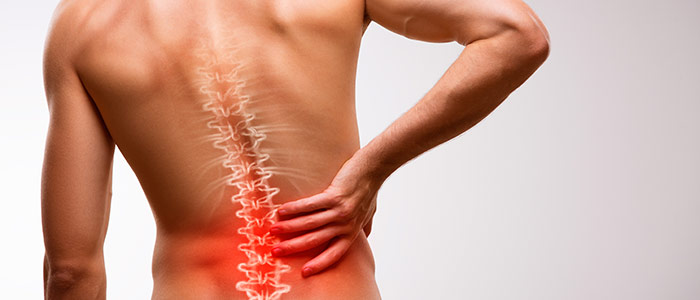
Lumbar Decompression Therapy
When something is wrong in the human body, there is not always a quick fix. Many people suffer from back pain. In fact, 31 million Americans are experiencing pain in their lower back at any given time. But when they seek treatment, they often find temporary relief from symptoms while what they want is long-term healing. Patients who suffer from the chronic pain associated with herniated, degenerating, or bulging discs may benefit from lumbar decompression therapy. This type of pain, which can manifest as back or neck pain itself as well as associated pain in the arms and legs, may have already been treated by traditional traction methods or even by spinal surgery with limited improvement. In these cases, a spinal decompression table that uses computerized sensors to perform stretching actions on the spine and promote healing can be uniquely effective.
Spinal decompression therapy is a type of treatment for back and neck pain. Decompression can be done both surgically and non-surgically. With both treatments, the goal is to stretch your spine and change its position to take pressure off of your spinal discs to relieve pain.
Conditions Treated By Spinal Decompression Therapy
Spinal decompression may be used to treat the following symptoms and conditions:
- Back or neck pain
- Degenerative disk disease
- Bulging or herniated disks
- Spinal stenosis
- Sciatica (pain, weakness, or tingling that extends down the leg)
- Injured or diseased spinal nerve roots (called radiculopathy)
What is Spinal Decompression Therapy?
Your spine is made up of small bones called vertebrae. Between each vertebra, there are cushy, fluid-filled structures called discs. Discs are often the source of chronic back pain. Normal wear and tear over time can cause the discs to flatten and harden.
Some people don’t experience pain associated with this, but others develop a painful condition called degenerative disc disease. Injuries can shift discs, causing them to bulge out between vertebrae, or even rupture. Ruptured discs, sometimes called herniated discs, leak fluid that irritates surrounding tissues and causes pain.
Spinal decompression therapy is different from surgical spinal decompression. The latter involves metal spacers that are inserted to replace damaged discs. Spinal decompression therapy is a non-surgical, pain-free treatment that creates negative pressure between the vertebrae of the spine. It achieves this by gently stretching the spine.
Discs that are bulging and compressed are pulled back into alignment, relieving pressure on nerves. Fluids and nutrients are also pulled in, re-hydrating compressed discs and encouraging healing.
Lumbar decompression therapy: Non-surgical treatment
Lumbar decompression therapy is a non-surgical treatment that helps relieve back pain caused by pressure in your spine. During non-surgical spinal decompression, your doctor, chiropractor, or other health care provider may use traction to slowly stretch and relax your back. This stretching may help your spine reposition itself, which may reduce your pain.
There are different techniques for spinal decompression therapy. Some health care providers place a harness around the hips. The harness may be attached to a motorized table that slowly moves the lower part of your body back and forth to relax your spine.
Spinal decompression therapy, also known as non-surgical spinal decompression, utilizes spinal decompression tables to relieve pain by creating a scenario in which bulging or herniated disc tissue can move back into place and heal, alleviating the pain this condition causes.
The goal of this treatment is to help patients who suffer from debilitating pain due to bulging, degenerating, or herniated discs. It can also be used for the pain management and treatment of many causes of sciatica, injured or diseased spinal nerve roots, and worn spinal joints.
The therapy itself works to stretch the spine, using a spinal decompression table or other device, to create negative pressure and space within the disc to allow disc fluid to move back into place. This creates an environment in which the disc can receive more nutrients and therefore heal itself more quickly and effectively. The ultimate goal of spinal decompression therapy is to relieve the patient’s chronic back, arm, neck, and/or leg pain, and to heal the source of the pain.
Spinal decompression therapy is also referred to as non-surgical decompression therapy since it is often used as a safe, affordable, and extremely effective alternative to spinal surgery. The distinction between surgical and non-surgical spinal decompression is an important one, as surgical spinal procedures are often considered the last option, whereas spinal decompression therapy is a safe treatment at any stage of back pain.
The most common spinal decompression surgeries are laminectomy and microdiscectomy, which present a greater risk of complication or failure.
What To Expect During Spinal Decompression Therapy
Before You Arrive
In many cases, your doctor or chiropractor will recommend that you drink plenty of water before you arrive at the clinic. Proper hydration will go a long way toward making the process more productive by ensuring that your body is prepared to stretch without cramps or other issues.
Your doctor may also give you supplements to take in advance so that your body will have everything it needs to make the most of the stretch.
During the Session
During your lumbar decompression therapy session, you will be strapped to a machine laying down. These machines vary in design, so your doctor will tell you which way to lay.
Once you have been secured safely to the machine, it will begin to apply slow and gentle traction while extending your spine. The machine will work through a series of incremental stretches on the way to a full stretch, depending on your current range of motion.
A typical session lasts up to 45 minutes, cycling through stretching and relaxing intervals.
After Your Session
After you have completed your session, your doctor will remind you to drink more water to give your back muscles time to repair themselves. In addition, they will likely give you a few exercises to practice at home between your therapy sessions. This will encourage continued progress and prevent regression during your daily routine.
In some cases, your doctor may recommend a heating pad or cold packs to help relax your muscles after treatment and prevent inflammation.
For the most part, spinal decompression therapy requires very little from the patient. Your job is to make sure that your body is properly hydrated and full of healthful nutrients so that the traction and decompression equipment can do its work.
It is important that you continue to stretch between appointments and work with your doctor to address any difficulties through your treatment.
Who Should Not Have Spinal Decompression Therapy?
Spinal decompression therapy is among the safest treatments for back pain. Like any procedure, it is not appropriate for everyone. Pregnant women and people with certain types of tumors, fractures, or some other types of bone problems should not have spinal decompression.
Talk to your doctor about your medical history, including any chronic health problems you may have and any recent surgeries.
People who have had a failed back surgery may be candidates for decompression if the surgery happened at least six months prior and if they do not have hardware implants or a fusion. The best way to know if you are a candidate is to talk to your doctor or chiropractor.
Some people have mild side effects, such as muscle pain or spasms after the first few treatments. This is because your muscles are being stretched in a new way, similar to when you begin a new workout routine.
Let your doctor know if you experience this, and he or she can recommend home care that will make you more comfortable.
How Long Does It Take To See Results?
Most patients will require a series of 20-24 treatments over several weeks to achieve lasting improvement. You can expect to feel some relief after the first few treatments and to gradually feel improvement as the series continues.
Disc problems and other spinal issues often develop over a long period, and it can take several weeks to heal that damage.
Depending on what caused your back pain, your chiropractor may recommend other treatments along with spinal decompression therapy. These might include chiropractic adjustment or posture rehabilitation.
Lumbar Decompression Therapy
At Advanced Health Solutions – GA Spine & Disc, we have a team of doctors and chiropractors with years of experience using lumbar decompression therapy to treat back pain. We can develop a personalized treatment plan that will relieve your pain and improve your quality of life.
Contact us today at (770) 926-9495 or fill out our online contact form to book an appointment.
Lumbar Decompression Therapy


